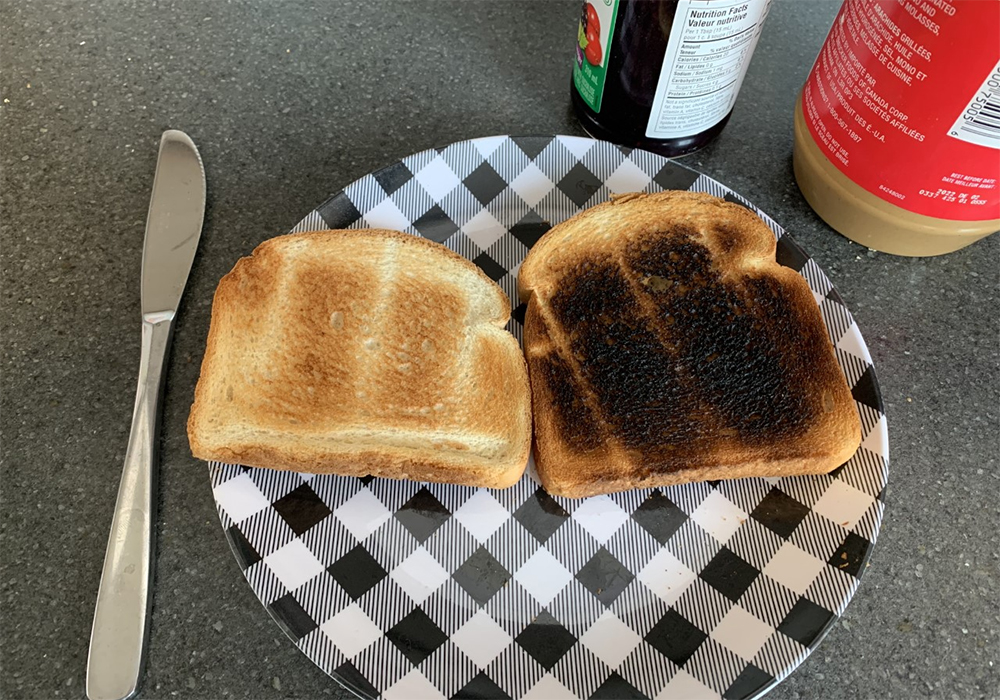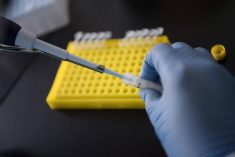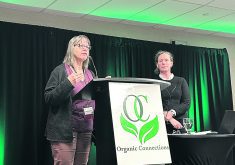Burnt toast — it has a nasty smell that lingers in the house and could be a threat to your health.
Burnt bread contains a compound known as acrylamide, a chemical that can cause cancer.
The darker the toast, the more acrylamide in the bread.
While most people toss black toast in the trash, some do like dark brown toast.
However, plant scientists in England have found a way to reduce the cancer risk from toasted bread.
The scientists used gene editing to design a type of wheat that produces less acrylamide when bread made with it is toasted.
Read Also

Farming Smarter receives financial boost from Alberta government for potato research
Farming Smarter near Lethbridge got a boost to its research equipment, thanks to the Alberta government’s increase in funding for research associations.
Gene editing, also known as genome editing, is a plant breeding technique where scientists can delete genes from the DNA of a plant or insert a genetic code from the same family of plants.
“Acrylamide has been a very serious problem for food manufacturers since being discovered in food in 2002,” said Nigel Halford, a plant scientist with Rothamsted Research.
“It causes cancer in rodents and is considered ‘probably carcinogenic’ for humans. It doesn’t just occur in toast and other wheat products, but many other foods that are fried, baked, roasted or toasted, including crisps and other snacks, chips, roast potatoes and coffee.”
Wheat doesn’t contain acrylamide, but it does have a natural chemical called asparagine, which turns into acrylamide during baking, toasting or processing at high temperature.
A wheat cracker would contain some amount of acrylamide.
The cancer risk from brown toast or Ritz crackers is probably very low, but the Rothamsted scientists used genome editing to “knock out” the gene that produces asparagine in wheat.
In one type of wheat, they were able to reduce the amount of asparagine by 90 percent.
That’s potentially good news for bakers and food companies, which monitor acrylamide in their products and have developed processing methods to reduce the amount of the chemical in crackers, chips and other products.
“Some (methods) have been successful, but they are not applicable to all food types, are often expensive to implement and may have detrimental effects on product quality,” Rothamsted said in a release.
A gene-edited wheat that produces less acrylamide when toasted or baked may not get to market in Europe.
The European Union has decided that gene-edited crops will be regulated the same as genetically modified crops, even though the technology is different. EU farmers are prohibited from growing GM crops.
The United States is taking a different approach. In simple terms, American regulators will now treat gene editing the same as conventional plant breeding.
“Essentially what they’re saying … if you could have got there (a crop trait) with conventional breeding, you’ll receive the same level of oversight as conventional breeding,” said Ian Affleck, vice-president of plant biotechnology with CropLife Canada.
It’s not clear yet where the Canadian government stands on gene-edited crops.
The feds are expected to unveil their policy in the next month or so.
Halford and the team working on low-asparagine wheat are hoping the British government is open to the idea of genome-edited crops and foods.
The Rothamsted scientists are now writing an application to the government, asking to run a field trial of the new wheat in the fall. If approved, it would be the first trial of genome-edited wheat in Europe.
In the meantime, Halford has some advice for folks who like their morning toast — light brown is probably healthier than brown toast.
“The colours associated with fried, baked, roasted and toasted foods form by similar chemical pathways to acrylamide, so colour is a very good indicator of how much acrylamide is forming.”
Contact robert.arnason@producer.com


















